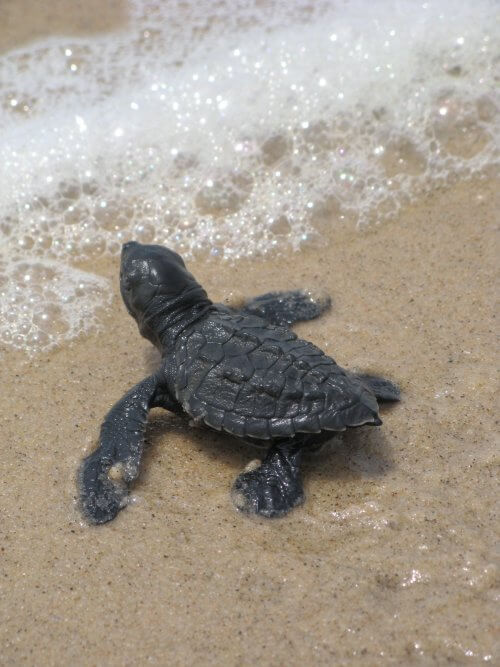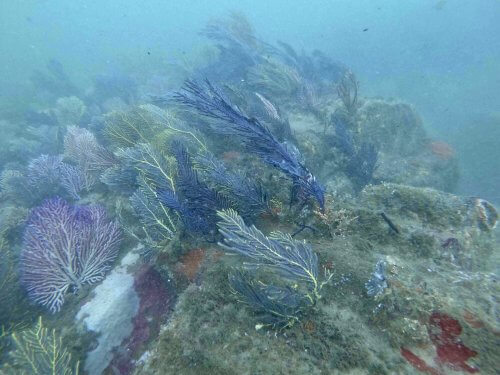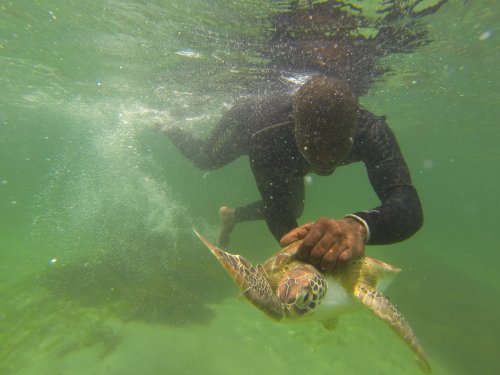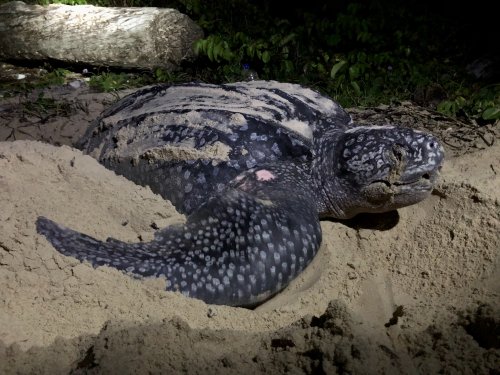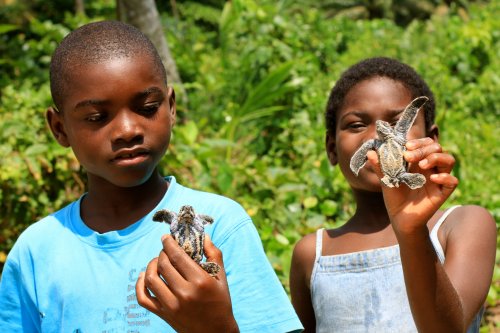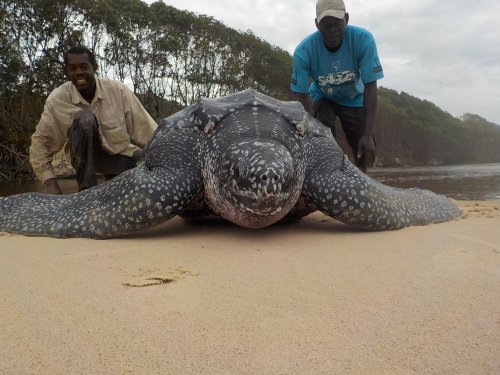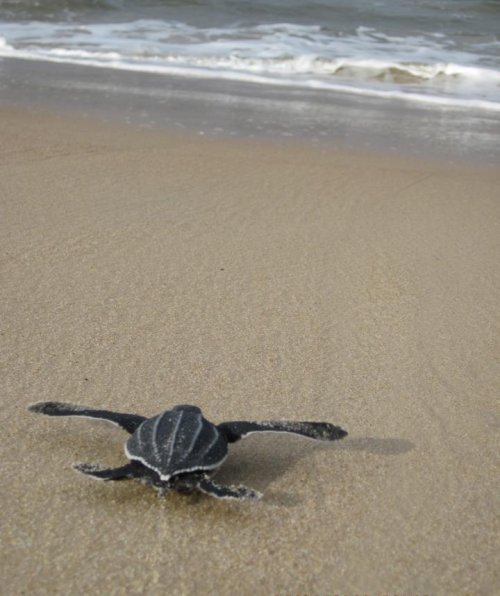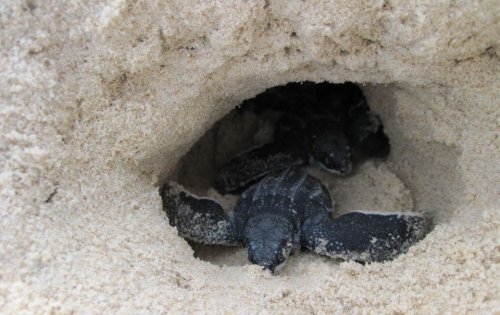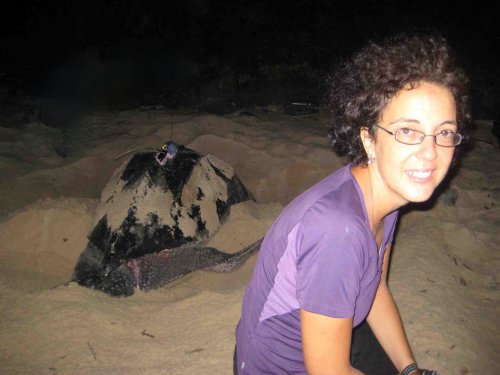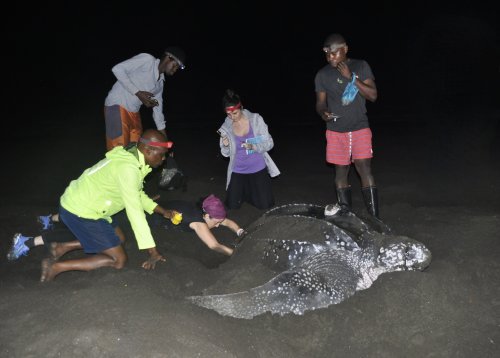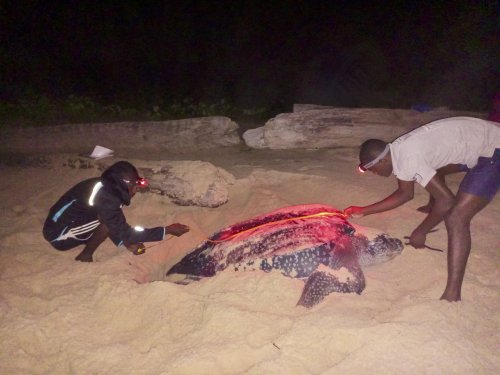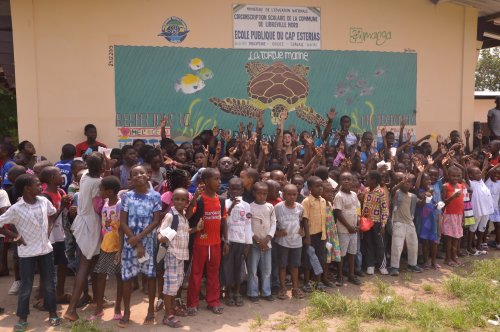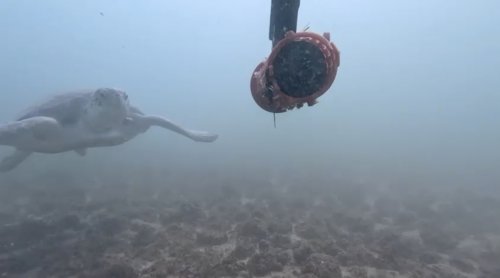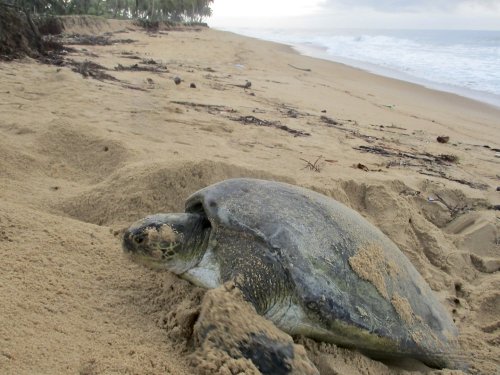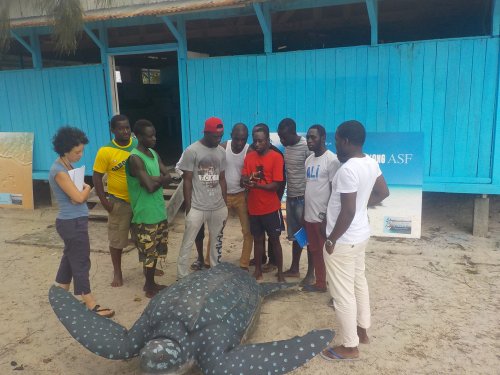Program Description
Sea turtles are flagship species for healthy marine ecosystems and for the millions that depend on marine resources for their livelihood. However, sea turtles’ life cycle makes them particularly vulnerable to threats and difficult to study; hatchlings take many decades to reach adulthood, while migrating at sea across thousands of kilometers between nesting and feeding grounds, instinctively returning to reproduce on the same beaches where they were born. The sea turtle populations in West and Central Africa are globally important, yet still understudied, and gravely endangered by many threats, such as fisheries, poaching, pollution, climate change and habitat loss. AACF’s African Sea Turtle Program is focused on some of the world’s most important nesting and foraging population of leatherbacks, olive ridleys, greens and hawksbill turtles. We are committed to the study of population trends and the impact of threats on sea turtles and their habitats, so as to better inform our capacity for their protection and management. We believe that conservation must be based on rigorous research but, just as importantly, it must be embedded within each local context, fostering the stewardship of natural resources by coastal communities. Our role is to strengthen these local initiatives, while facilitating inter-connectedness and integration throughout the region, promoting training, exchanges and collaborations among project partners and stakeholders in more than 10 African countries.
Dr. Angela Formia is AACF’s Director of the African Sea Turtle Program. She has worked on sea turtles in Central and West Africa since 1998, building a strong network of partners in the region, and developing a long-term research program spanning topics from population monitoring, nest ecology, conservation genetics, telemetry, habitat mapping, spatial modelling, climate analysis, etc. In addition to more than 30 innovative scientific publications, this work has helped underpin many conservation successes, particularly in Gabon, Equatorial Guinea and Côte d’Ivoire. National legislation has been enacted protecting sea turtle species, terrestrial and marine protected areas have been created specifically to cover sea turtle habitat, tourist programs based on sea turtle ecotourism have flourished, and governments have made long-term commitments to sea turtle monitoring and beach surveillance. But protecting sea turtles in part of their range is insufficient if they are threatened when they migrate away. Our biggest challenge today is conservation across national borders and in international waters, where sea turtles become ambassadors for healthy oceans, and where we must continue to build bridges toward a sustainable future.

